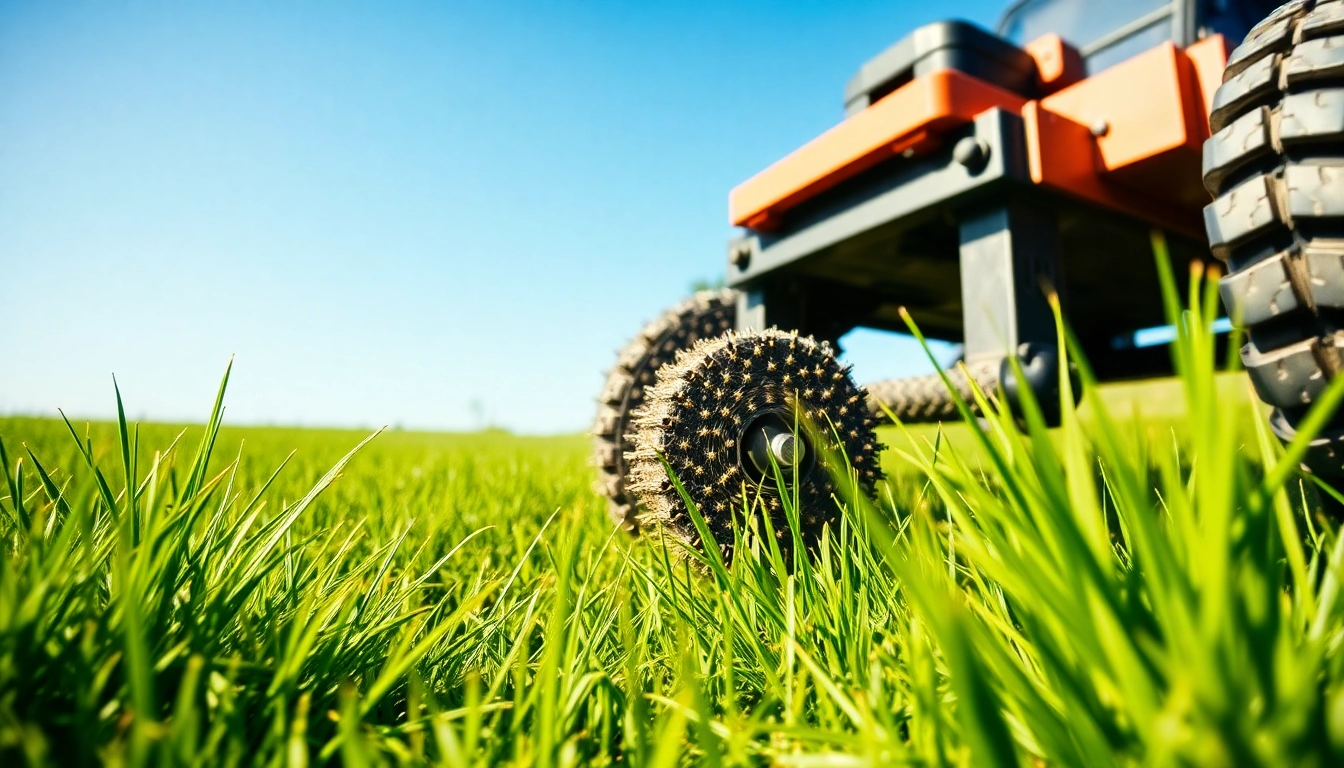Understanding Core Aeration
Core aeration is a crucial aspect of lawn care that promotes optimal grass health by reducing soil compaction and enhancing nutrient absorption. This process involves using a machine that removes small plugs of soil from the ground, allowing air, water, and nutrients to penetrate deeper into the root zone. Implementing core aeration not only revitalizes your lawn but also prepares it for other vital processes such as fertilization and overseeding.
What is Core Aeration?
Core aeration, also known as plug aeration, is a method that mechanically removes small cylindrical plugs of soil from the lawn. The aeration machine creates holes, typically about ½ to ¾ inch in diameter, spaced around 4 to 6 inches apart. These holes help to alleviate soil compaction that often occurs due to foot traffic, heavy machinery, or simply the natural settling of soil. By creating channels in the soil, core aeration facilitates better air circulation, water movement, and nutrient uptake, which are essential for thriving grass.
Benefits of Core Aeration for Your Lawn
Engaging in core aeration provides a multitude of benefits for your lawn:
- Improved Soil Health: By creating openings in the soil, aeration enables enhanced microbial activity and improves the overall health of the soil ecosystem.
- Enhanced Nutrient Absorption: Nutrients, water, and air can reach the grass roots more effectively, leading to better growth and resilience against diseases.
- Thatch Reduction: Core aeration helps break down thatch layers by allowing organic matter to decompose more thoroughly, thus preventing build-up that can suffocate your grass.
- Better Root Development: The removal of soil plugs allows roots to spread wider and deeper, making the lawn more drought-resistant and robust during extreme weather.
When to Perform Core Aeration
The timing of core aeration is critical for maximizing its benefits. For cool-season grasses, the best times are early spring and early fall, when temperatures are moderate, and the grass is actively growing. For warm-season grasses, late spring through early summer is ideal. Additionally, if your lawn experiences heavy foot traffic or has compacted clay soil, annual aeration is recommended. In less trafficked areas, every two to four years may suffice.
Core Aeration Methods
Different Types of Core Aerators
Several types of core aerators are available, catering to different lawn sizes and conditions:
- Manual Aerators: Ideal for smaller lawns, these tools require physical effort to operate and are generally less expensive.
- Tow-Behind Aerators: These are designed for larger lawns and can be attached to a riding mower or lawn tractor, making the aeration process quicker and more efficient.
- Standalone Motorized Aerators: For extensive lawns or commercial purposes, powered aerators offer the most efficiency, making it easier to handle larger areas effectively.
Best Practices for Core Aeration
To achieve the best results from core aeration, follow these best practices:
- Choose the Right Time: Aerate when the grass is actively growing for quicker recovery.
- Water Your Lawn: Moist soil helps the aerator penetrate more effectively. Water your lawn one or two days before aerating.
- Vary Your Patterns: Aerate in different directions each time to ensure complete coverage and deeper penetration.
- Leave Plugs on the Surface: Soil plugs left on the lawn will decompose naturally and return nutrients to the soil.
DIY vs. Professional Core Aeration Services
While many homeowners can perform core aeration themselves, hiring a professional service may be beneficial in certain situations. DIY aeration is cost-effective and allows homeowners to have greater control over their lawn care schedule. However, professionals bring experience, specialized equipment, and a level of expertise that can ensure optimal results, particularly for larger or more complex lawns. Consider the layout of your property, your budget, and your level of expertise when deciding.
Preparing for Core Aeration
Assessing Your Lawn’s Condition
Before aerating, take time to assess your lawn’s condition. Look for signs of soil compaction, such as poor water drainage, sparse grass growth, and thatch build-up. Check for areas of heavy foot traffic that may require more frequent aeration. This evaluation will guide you on the best approach to take in terms of aeration frequency and additional lawn care measures needed.
Essential Tools and Equipment
Aside from the core aerator, ensure you have the necessary tools for lawn care:
- Grass Rake: Useful for spreading soil plugs after aeration.
- Seed Spreader: Ideal for overseeding, which should be done following aeration.
- Fertilizer Spreader: For applying fertilizers consistently across your lawn.
Pre- and Post-Aeration Lawn Care
Proper care before and after aeration is essential for maximizing results:
- Before Aeration: Ensure your lawn is well-watered, and mow it to a shorter height to facilitate easier aeration.
- After Aeration: Avoid heavy foot traffic on the lawn for a few weeks to allow the grass to recover. Follow up with overseeding and fertilization to boost recovery.
Maximizing the Impact of Core Aeration
Combining Core Aeration with Overseeding
Core aeration and overseeding are often performed together to rejuvenate a lawn. The holes left from aeration provide excellent seed-to-soil contact, allowing seeds to germinate more effectively. This combination leads to denser turf and improved resistance to weeds and diseases. Aim to overseed immediately after aeration for the best outcomes.
Core Aeration and Fertilization Benefits
Fertilizing your lawn post-aeration is highly beneficial. The holes created from aeration allow fertilizers to penetrate deeper into the soil, giving grass roots much-needed nutrients at greater depths. This should be done using a slow-release fertilizer to ensure the grass receives nutrients over time rather than in a quick burst.
Understanding Soil Compaction and Aeration
Soil compaction can stem from various activities such as foot traffic, heavy equipment use, or poor soil structure. It inhibits root growth, air circulation, and water movement in the soil. Recognizing signs of compaction—like water pooling after rainfall or a spongy feel underfoot—is crucial for determining when to aerate. Regular aeration can alleviate these issues and maintain soil structure.
Core Aeration Maintenance Practices
Frequency of Core Aeration
The frequency of core aeration depends on factors such as grass type, soil condition, and lawn use. For lawns with heavy foot traffic or those with clay soils known for compaction, annual aeration is often necessary. On the other hand, lawns with less usage may only require aeration every two to four years. Keeping track of your lawn’s overall health will help inform your aeration schedule effectively.
Signs Your Lawn Needs Aeration
Being attentive to your lawn’s appearance and health can help you pinpoint when it needs aeration:
- Poor Growth: Sparse or thin areas in your lawn can indicate soil compaction.
- Water runoff: If water is pooling instead of soaking into the lawn, it may signal compacted soil.
- Thatch Build-up: More than ½ inch of thatch can hinder healthy grass growth and should be addressed with aeration.
Long-term Lawn Health Strategies with Aeration
To maintain long-term health in your lawn, integrate core aeration into your annual lawn care routine. Combine aeration with practices such as regular mowing, appropriate watering schedules, consistent fertilization, and disease management strategies. Taking a holistic approach ensures that your lawn remains healthy, lush, and resilient against environmental stressors.



